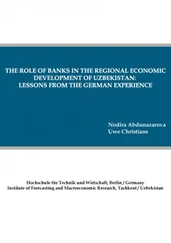Walter Field - Stones of the Temple; Or, Lessons from the Fabric and Furniture of the Church
Здесь есть возможность читать онлайн «Walter Field - Stones of the Temple; Or, Lessons from the Fabric and Furniture of the Church» — ознакомительный отрывок электронной книги совершенно бесплатно, а после прочтения отрывка купить полную версию. В некоторых случаях можно слушать аудио, скачать через торрент в формате fb2 и присутствует краткое содержание. Жанр: foreign_religion, Религиозная литература, foreign_antique, foreign_prose, на английском языке. Описание произведения, (предисловие) а так же отзывы посетителей доступны на портале библиотеки ЛибКат.
- Название:Stones of the Temple; Or, Lessons from the Fabric and Furniture of the Church
- Автор:
- Жанр:
- Год:неизвестен
- ISBN:нет данных
- Рейтинг книги:4 / 5. Голосов: 1
-
Избранное:Добавить в избранное
- Отзывы:
-
Ваша оценка:
- 80
- 1
- 2
- 3
- 4
- 5
Stones of the Temple; Or, Lessons from the Fabric and Furniture of the Church: краткое содержание, описание и аннотация
Предлагаем к чтению аннотацию, описание, краткое содержание или предисловие (зависит от того, что написал сам автор книги «Stones of the Temple; Or, Lessons from the Fabric and Furniture of the Church»). Если вы не нашли необходимую информацию о книге — напишите в комментариях, мы постараемся отыскать её.
Stones of the Temple; Or, Lessons from the Fabric and Furniture of the Church — читать онлайн ознакомительный отрывок
Ниже представлен текст книги, разбитый по страницам. Система сохранения места последней прочитанной страницы, позволяет с удобством читать онлайн бесплатно книгу «Stones of the Temple; Or, Lessons from the Fabric and Furniture of the Church», без необходимости каждый раз заново искать на чём Вы остановились. Поставьте закладку, и сможете в любой момент перейти на страницу, на которой закончили чтение.
Интервал:
Закладка:
11
In Cornwall the now common practice of placing a wreath of white flowers on the coffin is a very ancient and still prevailing usage.
12
Consecrated Bishop of Exeter A.D. 1598.
13
These crosses were erected at the following places: – Lincoln, Northampton, Dunstable, St. Alban's, Waltham, Stratford, Cheapside, Blackfriars, and Charing; those at Waltham and Northampton alone remain. The statue of King Charles now stands where the Charing ("Chère Reine") Cross formerly stood.
14
In a churchyard in Oxfordshire, a large altar-tomb, surrounded by iron railings, occupying a space of ground in which at least thirty persons might be buried, covers the grave of an infant of three months.
The erection of these masses of stone without restraint would make our churchyards only the burial-places of the rich, and would soon entirely exclude the poor from a place in them; whereas the poor have an equal claim with the rich to be buried there, and when buried, the same title to respect and protection.
15
The urns which are placed upon so many tombs in our cemeteries and churchyards, unless they have reference to the heathen custom of burning the dead, and placing the ashes in funeral urns, can have no meaning at all. We moreover not unfrequently see a gilded flame issuing from these urns, and here of course the reference is most clearly marked. The Christian custom of burying the dead, which we practise in imitation of the entombment of Christ, dates from the earliest history of man; and as well from the Old as the New Testament we learn that it has ever been followed by those who professed to obey the Divine will. The first grave of which we have any account was the grave of Sarah, Abraham's wife (Gen. xxiii. 19), and the first grave-stone was that over the burial-place of Rachel, Jacob's wife (Gen. xlix. 31).
16
There are comparatively but few churchyard grave-stones more than 250 years old, and probably there are very few of an earlier date but have engraved upon them the sign of the Cross. There are two very ancient grave-stones of this character, having also heads carved upon them, in the churchyard of Silchester. It is likely that the old churchyard crosses were often mortuary memorials. Probably there is hardly an old churchyard but has, at some time, been adorned with its churchyard cross; in most cases, some remains of this most appropriate and beautiful ornament still exist, and doubtless is often older than the churchyard as a place of Christian burial. In many places this cross has been lately restored to its proper place, near to the Lich-Gate. "Let a handsome churchyard cross be erected in every churchyard." – Institutions of the Bishop of Winchester, A.D. 1229.
17
The interesting custom of placing natural flowers and wreaths upon graves, is in every respect preferable to that which we see practised in Continental burial-grounds, where the graves are often covered with immortelles, vases of gaudy artificial flowers, images, &c. We have seen as many as fifty wreaths of artificial flowers and tinselled paper, in every stage of decomposition, over one grave in the cemetery of Père la Chaise, in Paris. In Wales it is a more general practice than in England, to adorn the graves with fresh flowers on Easter Day.
18
This story is true of a parish in Monmouthshire.
19
It is comparatively seldom that any other than the funerals of the poor take place on Sunday, and the reason commonly assigned is – that it is the only day on which their friends can attend. In one, at least, of the large metropolitan cemeteries, exclusively used as a burial-place for the rich , no funerals ever take place on a Sunday.
20
Let us hope that the time is near when this objectionable and unsightly appendage will be banished from our funeral processions. The late Mr. Charles Dickens, in his will, forbad the wearing of hat-bands at his funeral.
21
"In several parts of the north of England, when a funeral takes place, a basin full of sprigs of boxwood is placed at the door of the house from which the coffin is taken up, and each person who attends the funeral ordinarily takes a sprig of the boxwood and throws it into the grave of the deceased." — Wordsworth ( Notes, Excursion , p. 87).
22
Great care was taken by the medieval architects to make the porches of their churches as beautiful as possible. During some periods, especially the Norman, they seem to have bestowed more labour upon them than upon any other portion of the building. Both externally and internally they were richly decorated, and often abounded in emblematic tracery.
23
"The custom formerly was for the couple, who were to enter upon this holy state, to be placed at the church door , where the priest was used to join their hands, and perform the greater part of the matrimonial office. It was here the husband endowed his wife with the dowry before contracted for." — Wheatley. In a few church porches there are, or have been, galleries, which seem to have been intended to accommodate a choir for these and other festive occasions.
24
"The porch of the church was anciently used for the performance of several religious ceremonies appertaining to Baptism, Matrimony, and the solemn commemoration of Christ's Passion in Holy Week," &c. — Brandon's Gothic Architecture. The Office for the Churching of Women also used to be said at the church porch.
25
As our Commination Service declares, persons who stood convicted of notorious sins were formerly put to open penance. The punishment frequently inflicted was – that they should stand at the church door, clothed in a white sheet, and holding a candle in each hand, during the assembling and departure of the congregation on a Sunday morning. The old parish clerk of Walton-on-Thames, Surrey, remembers, when a boy, seeing a Jew perform this penance in Walton church.
26
"Formerly persons used to assemble in the church porch for civil purposes." — Brandon.
27
"At a very early period, persons of rank or of eminent piety were allowed to be buried in the porch. Subsequently, interments were permitted within the church, but by the Canons of King Edgar it was ordered that this privilege should be granted to none but good and religious men." — Parker's Glossary.
28
The parvise is to be found over church porches in all parts of England. It is more common in early English than in Norman architecture, and very frequently to be found in churches of the Decorated and Perpendicular periods. Probably the largest parvise in England is at Bishop's-Cleeve, near Cheltenham. There are interesting specimens at Bridport, Bishop's Auckland, Ampthill, Finedon, Cirencester, Grantham, Martley, Fotheringay, Sherborne, St. Mary Redcliffe, Bristol, Stanwick, Outwell, and St. Peter's-in-the-East, Oxford. In a few instances there are two parvises, one over the north and one over the south porch, as at Wellingborough. In some cases, as at Martley, Worcestershire, the upper moulding of the original Norman doorway has been concealed by the parvise of later architecture.
29
"The name was formerly given to a favourite apartment, as at Leckingfield, Yorkshire. 'A little studying chamber, caullid paradise.' (Leland's Itinerary.)" — Glossary of Architecture.
Читать дальшеИнтервал:
Закладка:
Похожие книги на «Stones of the Temple; Or, Lessons from the Fabric and Furniture of the Church»
Представляем Вашему вниманию похожие книги на «Stones of the Temple; Or, Lessons from the Fabric and Furniture of the Church» списком для выбора. Мы отобрали схожую по названию и смыслу литературу в надежде предоставить читателям больше вариантов отыскать новые, интересные, ещё непрочитанные произведения.
Обсуждение, отзывы о книге «Stones of the Temple; Or, Lessons from the Fabric and Furniture of the Church» и просто собственные мнения читателей. Оставьте ваши комментарии, напишите, что Вы думаете о произведении, его смысле или главных героях. Укажите что конкретно понравилось, а что нет, и почему Вы так считаете.












